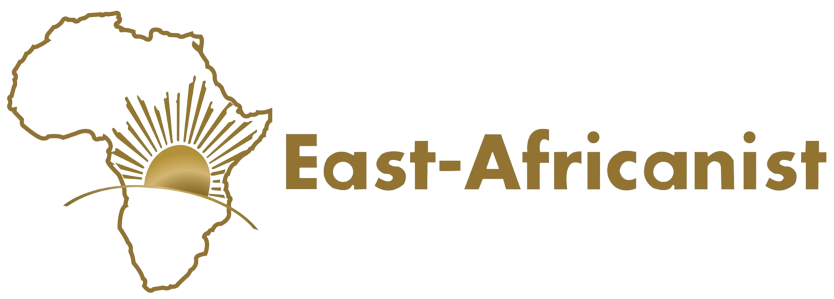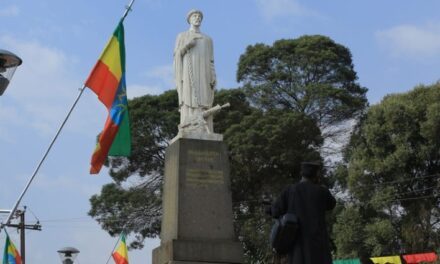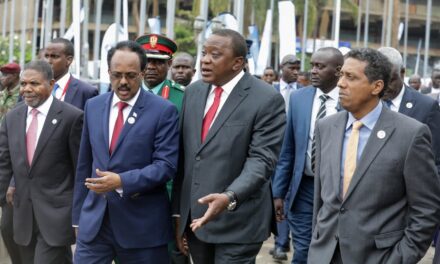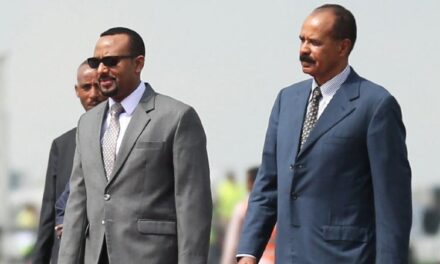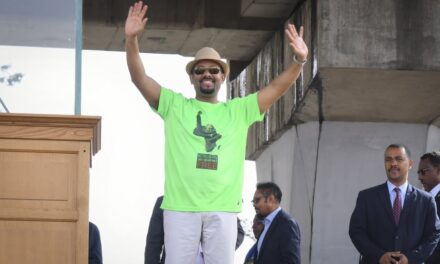Messay Kebede, Ph.D. (University of Dayton)
Nation-building is the process by which peoples with diverse origins, histories, languages, and cultures and living under one political rule develop over time common interests, goals, and values that are sufficient enough to make them want to continue to live together. The method that seems most suited to obtaining such a result is the practice of assimilation. This is usually done through the imposition of the language and culture of the political dominant group, which group uses the state machinery to homogenize the society in its own image. Evidently, the policy succeeds only to the extent that it does not encounter a strong resistance from the groups targeted for assimilation and that it is implemented over a period of time long enough to ensure the effective political continuity of the dominating group. The cases of France and Italy can be considered as representative examples of a successful outcome of nation-building through the policy of assimilation.
The Making of Ethiopia and its Deconstruction
A similar attempt at nation-building through assimilation was carried out in Ethiopia under Haile Selassie’s imperial rule and the Derg’s military regime. In both cases, the imposition of one official language, the implementation of a uniformizing system of education, and the incentive of social mobility were used to forge various ethnic groups into one national identity described as Ethiopianism. Though both regimes used different integrating ideologies, the one focusing on the unifying role of the throne, the other on the Marxist-Leninist expectation that the class solidarity of the working people will surmount ethnic divisions, there is no denying that the process had registered a successful, though incomplete, result.
The completion was interrupted by the collapse of the central government subsequent to a military reversal: the combination of the Derg’s erratic political leadership with incompetence and totalitarian methods explains the failure to overpower northerner centrifugal forces. The revolutionary process that brought about the radicalization of the military regime had engendered so deep class and ethnic fractures that ethnonationalist groups, which at first were marginal, became a magnet of recruitments to the point of countering and defeating militarily the central government. Even so, the success of Ethiopianization was such that the ethnonationalist party that seized power had to resort to a rigid and frankly ominous system of ethnic federalism to deconstruct the result of the previous policy of assimilation.
Very soon it became clear that the system of ethnic federalism could not have a lasting viability, as it was designed to keep indefinitely in power through a policy of divide-and-rule a party representing a minority ethnic group. In addition to being vastly and indiscriminately suppressive, the system could not avoid the spread of corruption, nepotism, and incompetence at all levels of the state apparatus and economic organizations. As was expected, extensive uprisings flared up in various parts of the country, notably in the two most populous ethnic regions. Neither repression nor promises of reform could stop the protests, one important reason being that internal divisions paralyzed the ruling coalition of ethnic parties, with the consequence that the dominant party in the coalition gradually lost control of the situation. All these events ended with the election of Abiy Ahmed as the new Prime Minister.
Medemer or the Patching up of Unity
From the get-go, Abiy showed a different tone backed by a conciliatory and unifying message. Not only did he promise reforms, but he also announced a guiding principle, medemer (synergy), which, he says, is the right remedy to heal the ethnic fractures by channeling them in the direction of cooperative and mutually beneficial relations. Medemer does not question the political demarcations of ethnic groups, as implied in the very use of the mathematical notion of addition. The latter presupposes the preservation of distinct units, thereby significantly falling short of aiming for a melting pot policy, in the manner of previous Ethiopian regimes.
Abiy’s dilemma lies in this half-measured solution. Even if we assume, and this is a big if, that the distinct groups will be able to reach a high level of cooperative association, they will remain far from forming a united national community. Moreover, in dismantling Ethiopianism into distinct ethnic groups, the previous regime had sowed distrust and animosity among them that are not easy to overcome. Worse still, its use of ethnicity as a political tool to achieve hegemony could not but emulate other ethnicized elites, especially when the elites claim to represent a large population, as is the case with the various Oromo political parties, including the party of the Prime Minister himself. The use of ethnic identity for a hegemonic pursuit has even contaminated certain groups opposing the government, as shown by the nostalgic dissenting voice of some ethno-nationalist Amhara. Hence the question: is the principle of medemer really apt to overcome all these negative developments?
Confronted with these difficulties, the Prime Minister understood the need to mitigate the fractures through the medium of a political agency that could serve as a glue and a model of cooperation. Indeed, a closer look at the formation of the ruling Prosperity Party reveals the thinking behind the restructuration of the EPRDF. The latter was a coalition of ethnic parties held together by the hegemonic position of the TPLF. The restructuring of the coalition into one Prosperity Party was obviously meant to lessen the ethnic divisions and make way for a pan-Ethiopian party. Where a united party tops or crowns regional divisions, it dilutes their political impact and likens them to administrative distinctions. Since the top is where everything converges and integrates, the regional divisions appear as ramifications of one single entity.
<p class="has-black-color has-text-color" value="<amp-fit-text layout="fixed-height" min-font-size="6" max-font-size="72" height="80">In support of a successful outcome of nation-building by the medium of a ruling inclusive party, one can cite the case of India. Though ethnically diverse, India has put in place a successful procedure of nation-building without having recourse to assimilation. The multi-ethnic nature of the Indian National Congress since its inception, both in its ideological makeup and composition, was instrumental in forging India’s ethnic and religious diversity into an inclusive nationalism. As the party embraced elites and middle-classes from diverse groups, it easily turned into an all Indian political organization transcending religious and ethnic cleavages. Needless to say, the organization gained a mass support thanks to Gandhi’s charismatic leadership. Because political alliances transcending ethnic divides thus became stabilized through institutionalization, they developed a pan-national identity. As a result, parties formed around ethnic divides could neither politicize ethnicity nor have access to state power. The consequence was that they remained marginal political forces. In support of a successful outcome of nation-building by the medium of a ruling inclusive party, one can cite the case of India. Though ethnically diverse, India has put in place a successful procedure of nation-building without having recourse to assimilation. The multi-ethnic nature of the Indian National Congress since its inception, both in its ideological makeup and composition, was instrumental in forging India’s ethnic and religious diversity into an inclusive nationalism. As the party embraced elites and middle-classes from diverse groups, it easily turned into an all Indian political organization transcending religious and ethnic cleavages. Needless to say, the organization gained a mass support thanks to Gandhi’s charismatic leadership. Because political alliances transcending ethnic divides thus became stabilized through institutionalization, they developed a pan-national identity. As a result, parties formed around ethnic divides could neither politicize ethnicity nor have access to state power. The consequence was that they remained marginal political forces.Another example is Switzerland. The various language groups composing the ethnic diversity of Switzerland never aspired to become independent states; nor did any of the composing groups show interest in joining the neighboring state that spoke a similar language. What is more, no political party that claimed to represent one ethnic group emerged as a significant political force. The reason for the inability to politicize language was that a trans-ethnic elite fully assumed the leadership of the political development of the country and its modernization. The fact that the political alliance of elites from all the ethnic groups guided the nation-building process had a major outcome: it created and stabilized trans-ethnic institutions, and so facilitated the consolidation of a pan-Swiss national identity.
These two examples clearly show the possibility of integrating ethnic diversity through the forging of a pan-national identity, just as it underscores the condition for its successful outcome. Only when a prior and lasting alliance of elites transcending ethnic references presides over the political development of a country with diverse composition does the effort of integration into a national community achieves its target.
The Primacy of Unity
As concerns Ethiopia, however, be they in the Eritrean, Tigrean, Oromo, or Somali cases, the political movements that became dominant came into being and grew as ethnonationalist movements. The movements that were initially trans-ethnic, like the EPRP and MEISON, were defeated, and those that appeared during the time of the TPLF’s rule, like Medrek, either failed or remained marginal. Consequently, Ethiopia faced and is still facing the extremely difficult task of achieving some form of national unity under the aegis of artificially united, competing, and mutually suspicious ethnic parties.
Abiy’s move to replace the ruling coalition of parties by a pan-Ethiopian party was clearly meant to provide the missing trans-ethnic political component that would be instrumental in implementing the principles of Medemer. Unfortunately, not only is Prosperity Party far from being a trans-ethnic party, but worse yet, it is fractured by competing party interests and saddled with the hegemonic aspiration of the Oromo component of the party. Following the defeat of the TPLF, the center of gravity of ethnic tensions has shifted to Prosperity Party: neither the mass killings nor the displacements taking place in various parts of the country can be explained without the double game of influential members of the Oromo faction of the Prosperity Party, who obviously are quite reluctant to see the neutralization of the various armed groups operating in Oromia.
In light of the condition of a viable nation-building effort, the crucial question is then to know whether a similar outcome can be obtained by blending forces that are centrifugal by formation, as is the case of Ethiopia. Let there be no misunderstanding: in India as well as in Switzerland, a broad and solid consensus among diverse elites came first, and this consensus became regional through a democratic process of decentralization. The result is that ethnic distinctions took the form of a differentiation, ramification of an agreed unity. The reverse is true in Ethiopia: the ethnic groups come first, and they are supposed to form Ethiopia through their agreement. Unity is not the point of departure, the center that differentiates into ethnic diversity; rather, it is the artificial sum of sovereign ethnic entities, a collection that is no different from African Unity or European Union. In this disparate gathering, nothing holds together the ethnic groups except what each group deems to be of its best interests. No wonder, then, that the hegemonic rule of one of the associates is required to keep the gathering afloat.
This is to say that Abiy’s effort to convert the old EPRDF, which was a mere collection of ethnic parties, into a democratic pan-Ethiopian party has little chance of being successful so long as the Ethiopian Constitution follows the centripetal model of building a nation on the basis of agreement between disparate ethnic groups. The whole spirit of the Constitution must be changed: instead of starting from the assertion, “We, the Nations, Nationalities and Peoples of Ethiopia,” its opening preamble must be: “We the People of Ethiopia.” In no way does this opening preclude the recognition of ethnic regions: just as the various aspects of a giant tree grew from its initial seed, ethnic demarcations will simply be perceived as differentiations within a given and fully endorsed unity. When instead of being the point of arrival, unity becomes the point of departure, the various provisions of the Constitution would appear as so many ways to perfect the union in the direction of freedom and equality.
